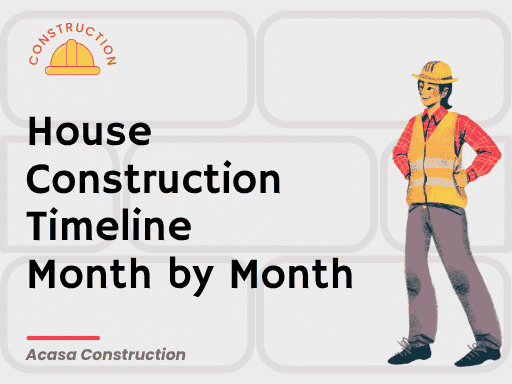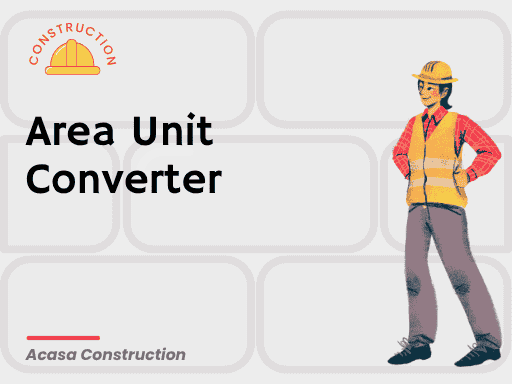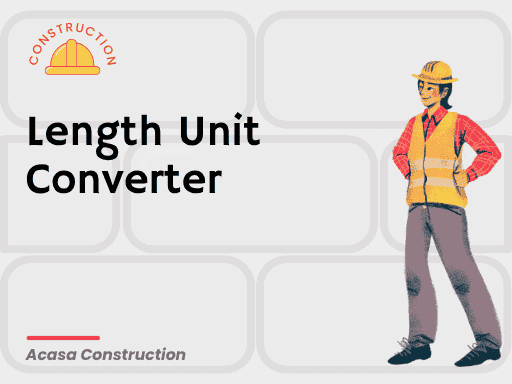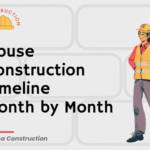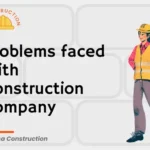You are probably wondering: How long does it take to build a house, really? Well, not only you. Most homeowners feel the same in the beginning.
So, are you ready to build your dream home? That is a big step and an exciting one!
But when you hear terms like foundation, plastering, and handover, your head might spin a little.
What are all these terms? When will you get your home ready? Now lets look into it.
Let me explain for a G+1 house construction. In short, the construction time line is between 10 to 12 months for a G+1 home (ground + first floor) with proper curing and quality work.
Here is your personal month by month guide from the first brick to the final coat of paint. We’ll cover every major step in the home construction process in India, including:
- Site preparation
- Foundation
- Wall construction
- Plumbing, wiring, painting and much more!
You’ll also discover tips to avoid delays, manage costs, and stay in control. even if this is your first time building a house.
Why a House Construction Timeline is Important
A proper house construction timeline helps you:
✅ Set realistic expectations
✅ Reduce stress by knowing what’s next
✅ Plan your budget month by month
✅ Understand the residential construction stages clearly
When you know what’s coming each month, the process becomes smoother. You can keep track, ask the right questions, and avoid unwanted delays.
A Quick Heads-Up ⚠️
Every home is different. While this house building timeline gives you a solid idea of what happens each month, keep in mind:
- Weather changes
- Material availability
- Local inspections
- Changes in design
- Or how fast your builder works
All these things can affect your schedule. So think of this guide as your friendly map, not a strict rulebook.
Ready to take a look at what each month holds? Let’s break it down! 👷♂️📅
🛠️ The Pre Construction Phase
This may take from 1 month to 3 months. This stage may feel slow, but trust me. It’s the foundation of everything that follows.
If you get this part right, the rest of your house construction timeline becomes much smoother. Let’s look at what happens during this phase. 👇
Builder Selection: Talk to 2–3 different builders. Ask for a detailed estimate and construction schedule.
👷♀️ A reliable builder can save you money, time, and a lot of headaches.
🔗 How to choose the right builder for your project.
Architectural Design & Blueprints: You will work with an architect or civil engineer to finalize your floor plan (how many rooms, layout, orientation elevation)
💡 Don’t rush here. This design decides how your home will feel for years to come.
Budgeting & Financing:Create a clear budget, including materials, labor, finishing, and hidden costs. Explore your options for a construction loan or home loan.
Permits & Approvals: DTCP / CMDA / Panchayat approvals (based on your area). Building plan approval. Property tax clearance, electricity, and water board NOCs.
This part can take a few weeks, so start early. Your architect or builder can usually help with this paperwork. Knowing about the pre construction process will also help you.
Site Preparation Begins: Time to Get Your Hands (a Little) Dirty 🧹
Now that the paperwork and planning are done, let’s get your site ready!
Site Clearing & Ground Marking (Month 1, 2-3 days)
Here’s where you’ll actually see some action on your land!
- Remove any plants, trees, stones, or debris
- Use your blueprints to mark the exact location of walls, rooms, and utilities
Your builder will use measuring tapes, ropes, and chalk powder to outline the house on the ground. It’s simple — but satisfying!
Excavation Works (Month 1, 3-5 days)
This is where machines move in.
- Excavation for the foundation, footings, and underground utilities like water lines and septic tanks.
- The depth and size of these trenches depend on your structural design and soil type
👷 It’s noisy, dusty, and exciting. Your residential construction journey is officially underway!
🧱 The Foundation & Structural Base: Building from the Ground Up (1 to 2 Months)
With your land marked and excavation done, now comes one of the most important parts of building a house, the foundation.
Think of this as the root of your home. If it’s not strong, everything built on top of it can suffer later.
Foundation Works (Month 1, 2 to 4 Week )
Footings & Formwork
- Footings are the base of your foundation walls. They spread the weight of your house safely into the soil.
- Framework is like a mold made of wood or steel. It holds the concrete in place while it sets.
- Before pouring concrete, steel rods (reinforcement bars) are placed inside to make the footing strong.
Concrete Pouring & Curing
Once the formwork and steel are ready, concrete is poured in.
- This mix of cement, sand, gravel, and water forms the solid base.
- After pouring, the concrete needs to be cured. This means keeping it moist for 7 to 10 days so it becomes strong and doesn’t crack later.
💧 Tip: Proper curing = long lasting foundation.
Raising Ground Level & Plinth Beam (Month 1, 1 to 2 Week)
Why the Plinth Beam Matters
- After the footing is ready, the plinth beam is built on top.
- It connects all the columns at the base level and distributes the load evenly.
- It also prevents moisture from the soil from rising into the house, super important in areas with heavy rain 🌧️
Building the Plinth Beam
- First, steel rods are tied based on the structural design.
- Then formwork is placed around the rods.
- Finally, concrete is poured and cured, just like in the footing.
You’ll start to see the outline of your future home now, pretty exciting! 🎉
Backfilling & Ground Floor PCC (Month 2, 1 to 2 Week)
Backfilling Around the Foundation
- After the plinth beam, the space around the foundation is filled with soil.
- This soil is compacted layer by layer using machines or rods.
- Proper backfilling ensures the structure is stable and won’t sink over time.
Pro Tip: Use good quality red soil or gravel for better compaction.
Ground Floor PCC (Plain Cement Concrete)
- Once the ground is level, a layer of Plain Cement Concrete (PCC) is poured.
- This creates a smooth, solid base for laying floor tiles later.
- It also keeps the ground moisture away and helps with leveling.
Think of it like a concrete mat your house will stand on. 🧼
🏗️ Framing & Roofing: The Skeleton Takes Shape (Months 2 to 5)
Now that your foundation is solid, its the time to bring your home upward, brick by brick and beam by beam.
This is where the shape of your house really starts to appear, and you will feel like you are building a real structure, not just preparing the land!
Here is what you can expect during this exciting stage:
Column Raising & Brickwork up to Ground Floor Roof Level (Month 2, 2 to 4 weeks)
Erecting Columns
- Columns are the vertical pillars that carry the weight of your home.
- Steel rods are tied based on the structural drawing and placed into formwork.
- Then, concrete is poured to create strong, upright supports.
🧱 Wall Construction
- Once columns are set, brickwork begins for the external and internal walls.
- Most homes in India use either red bricks or concrete blocks, depending on design and budget.
- Openings for windows and doors are left during this stage.
Ground Floor Roof Slab (Month 3, 1 to 3 Week)
Formwork & Reinforcement
- Just like the foundation, formwork (molds) are set up again but now for the roof slab of the ground floor.
- Steel rods are tied based on your design, which helps distribute weight evenly across the slab.
Concrete Pouring
- Once the steel is ready, concrete is poured to form the roof slab.
- After pouring, the slab is cured for several days to ensure proper strength.
🚧 This marks the completion of the ground floor shell — walls, roof, and all!
Column Raising & Brickwork up to First Floor Roof Level (Month 4, 2 to 4 Week)
First Floor Column Raised
- After the ground floor slab is cured, the next set of columns are raised.
- This repeats the same process as before: steel + formwork + concrete = strong columns.
First Floor Wall Construction
- Brickwork for the first floor walls starts after columns are done.
- This is when you’ll see your home stretch toward the sky.
- Builders also plan utility spaces like bathrooms, balconies, and stairs during this phase.
First Floor Roof Slab (Month 5, 2 to 4 Week)
Final Roof Structure
- The same steps repeat: set formwork, tie steel, and pour concrete.
- This slab becomes the final major horizontal structure unless you’re planning a terrace or more floors.
Roofing Installation (Immediately After)
- If you’re building a single storey house, now is the time to fix the roof.
- Depending on your choice, it could be RCC flat roofing, sloped tiled roofing, or metal sheet roofing.
- Builders ensure weatherproofing with proper tiling, slope direction, and drainage outlets.
🌦️ Roofing done right = no leaks during the rainy season!
Enclosure & Rough-Ins: Sealing and System Integration (Month 6)
At this stage, your home starts feeling like a real living space.
The rooms are taking shape, walls are being smoothed, and the important systems like electricity and water are getting installed.
Lets look at what happens during Months 8 and 9 👇
Plastering Works (Month 6 to 7, 4 to 8 Weeks)
Now that the house is enclosed, its time to smooth out the walls inside and outside. This is where it starts to look clean and finished.
Internal & External Plastering
- Plastering involves applying a layer of cement mortar on the walls and ceiling.
- Inside walls are plastered to get them ready for painting or tiling.
- Outside plaster adds strength and protects from rain and heat.
Curing Time
- After plastering, walls need to be cured with water daily for about 7–10 days.
- This keeps the plaster from cracking and helps it harden properly.
💧 Don’t skip curing! Its a simple task, but it makes a big difference in the long term strength of your home.
🔌 Plumbing & Electrical Works (Rough-In) (Month 8, 2 to 3 Week)
This is a crucial stage. Think of your home like a body plumbing and electrical work are like the nerves and blood vessels. If this step isn’t done right, you’ll face problems forever. So take your time here.
Electrical Conduits & Wiring
- Conduits (plastic pipes) are laid inside walls and ceilings for wires.
- Wires are pulled through the conduits to connect fans, lights, plug points, switches, and AC points.
- Make sure to follow a proper electrical layout plan to avoid confusion later.
Plumbing Pipes & Drainage
- Water pipes for bathrooms, kitchen sinks, and garden taps are installed now.
- Drainage lines are also laid to carry away wastewater.
- The plumber ensures the right slopes and pipe sizes are used to avoid future clogs.
HVAC Ducting (if applicable)
- If your house has central air conditioning or ventilation, now is the time to install ducts.
- Most homes in India don’t go for this unless it’s a premium villa or large independent house.
🚪 Doors & Windows Fixing (Early Month 8, 1 to 2 Week)
After the structure is up, its time to close the house. That means installing the basic elements that will protect your home from weather and intruders.
Installing Frames
- Door and window frames are fixed first.
- These are made from wood, UPVC, or aluminum, depending on your choice and budget.
- Proper alignment is super important for both windows and doors.
Glazing & Shutters
- Once frames are in, glass panes (glazing) are installed for windows.
- Shutters (the part that opens and closes) come next for both doors and windows.
- Some people also install grills for safety, especially in ground floor windows.
When this step is done, your home feels sealed from outside dust and rain.
🧰 Finishing Touches & Installations: Bringing the Interior to Life (Month 9, 2 to 6 weeks )
You have come a long way! The walls are up, wires and pipes are in place. Now it’s time to bring your home to life with finishes and final touches 🎨🛠️
These months are all about comfort, beauty, and personality. Here’s what to expect:
Flooring & Painting
This is when your house starts feeling like a home. You’ll finally see the colors, textures, and materials you’ve chosen come together beautifully.
Flooring Installation
- Whether it’s tiles, marble, vitrified tiles, wooden flooring, or granite, this is when it all goes in.
- Flooring is laid in all areas like bedrooms, kitchen, bathrooms, and balconies.
- Make sure you’ve chosen a non-slip finish for wet areas like bathrooms.
Interior & Exterior Painting
- Painting begins with primer, followed by two or more coats of paint.
- You’ll see base coats and then final shades go up on the walls.
- External paint is usually weatherproof to handle rain and sun.
🎨 Tip: Lighter wall shades make rooms feel bigger and brighter.
💡 Fitting Fixtures & Final Installations (Month 10, 1 to 2 Week)
Now the home starts to function. All the essential items that make life easy are fitted during this stage.
Electrical Fixtures
- Time to install switchboards, fans, LED lights, chandeliers, and power outlets.
- This is also when AC units and geysers can be mounted, if not done earlier.
Plumbing Fixtures
- Sinks, faucets, western or Indian toilets, shower heads, and water heaters are fixed now.
- Ensure that everything is leak free and properly aligned.
Kitchen & Bathroom Cabinets
- Whether you have chosen modular or custom made, cabinets are now fixed in place.
- Bathroom vanity units and under sink storage also come in at this stage.
Balcony Railings & Staircase Handrails
- These are both safety elements and style features.
- Most homes in India use stainless steel, glass, or wood railings for modern aesthetics.
🔌 At this point, your home is nearly ready to welcome you in, everything works, and everything is in place.
🪑 Interiors (Month 11, 1 to 3 Week)
The last part of construction is where your personal style shows up. Storage, furniture, kitchen setup, and final decor are the stars here.
Wardrobes & Storage Solutions
- Most homes go for modular wardrobes or custom carpentry depending on budget.
- Floor to ceiling wardrobes help save space and keep rooms clutter free.
Modular Kitchen Installation
- The kitchen gets cabinets, countertops (like quartz), wall tiles (backsplash), and appliances fitted.
- Think about space saving drawers, corner units, and tall pantry storage.
TV Unit & Entertainment Spaces
- Wall mounted TV units with hidden wiring, storage for speakers, and display shelves go in now.
- You can customize this as per your familys needs.
Wall Decors & Light Hangings
- The final personal touches paintings, clocks, pendant lights, and wall art bring character to every room.
- Curtain rods, window blinds, and indoor plants add warmth and softness 🌿
🎉 The Grand Finale: Inspections, Handover, and Housewarming (Month 12)
You have built your dream home now it’s time for the final checks, key handover, and of course… the big celebration! 🏠✨
This stage makes everything official. You will ensure everything works as expected and that you are legally and emotionally ready to call it home sweet home.
Final Inspections & Quality Checks (Month 12, 1 to 2 Week)
Before the handover, a few important reviews take place to check the quality and safety of your new home.
Builder’s Walkthrough
Your builder will do a complete site walkthrough with you.
Together, you will identify snag list or punch list items llike chipped paint, misaligned tiles, or minor leaks.
Official Inspections
Local authorities may carry out inspections to ensure the building follows all municipal and structural regulations.
In many areas of India, this includes completion certificate (CC) and occupancy certificate (OC).
Rectification of Issues
Any last minute issues (big or small) will be corrected before final handover.
Common fixes include plumbing leaks, door alignment, wiring rechecks, or paint touch-ups.
🔑 Handover & Documentation
The moment you have been waiting for, getting the keys to your new home!
Here’s what usually happens:
You’ll receive the keys, along with a set of important documents.
These may include:
- Structural and architectural drawings
- Warranty documents for fixtures and appliances
- Certificates for plumbing, electrical, and HVAC systems
- Tax receipts, insurance, and municipal clearances
🪔 Housewarming Ceremony (Month 12)
Time to bring the blessings and joy into your new home! 🥳
In India, housewarming is a big moment known as Gruhapravesam or Vastu Puja, depending on tradition.
Choose an auspicious date and time based on your family’s beliefs or astrological advice.
Invite close friends and relatives to share the joy.
Decorate with flowers, rangoli, diyas, and of course, a hearty home cooked meal 🍲
🎉 This celebration isn’t just cultural, it’s symbolic. It marks the start of a new chapter in your life.
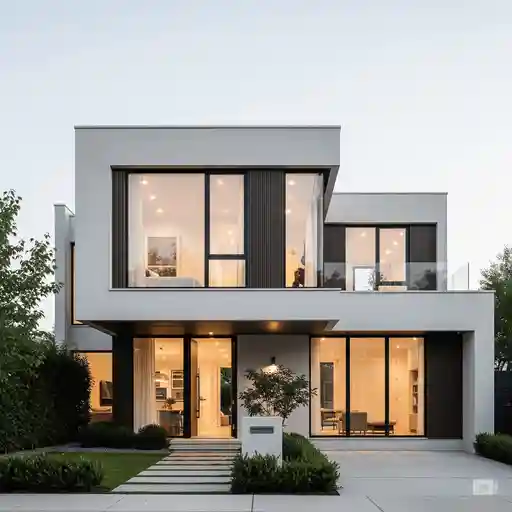
🏡 Your Dream Home is Now a Reality!
From the first brick to the final blessing, building a home is a year long journey filled with decisions, dreams, and dedication.
Now that you have walked through each phase, you are better prepared to manage expectations, timelines, and stress.
Need help planning your home construction in Tamil Nadu? Our team at Acasa Construction is here to guide you, from blueprint to housewarming. 💬
🕰️ Factors Influencing Your Timeline
When you are building a home, it is natural to ask, “How long will it take?” But the truth is, the timeline can change.
Some homes finish faster. Others may take longer.
Let us look at the main reasons why the timeline may shift. So you can plan better and stay prepared.
🌧️ Weather Conditions
Weather plays a big role in house construction.
If it rains too much, workers can’t dig, pour concrete, or lay bricks. The ground stays wet and soft, making it unsafe to work.
In hot summers, concrete dries too fast. That can cause cracks. In very cold places, work may stop due to frost or fog.
So, bad weather can slow things down by days or even weeks.
🏗️ Material Availability & Supply Chain
Building a house needs many materials like cement, steel, sand, bricks, tiles, pipes, and more. If any of these are delayed, work can’t move forward.
Sometimes there are transport strikes, or trucks get stuck in traffic.
Other times, materials may not be in stock at the local market. When that happens, construction may pause until the items arrive.
🏡 Design Complexity
If your home has a simple layout, it gets built faster. But if you have a custom design with special shapes, high ceilings, or stylish corners, it takes more time.
Architects and builders need to follow detailed steps carefully.
Even the workers take more time to make sure every small detail is perfect. So, more design means more time.
📝 Permit & Inspection Delays
Before building starts, you need to get permission from the local authority. This includes building plan approvals and environmental clearances.
Also, during construction, officials may come for inspections. If there’s a delay in getting approvals or the inspection is postponed, work has to stop.
These are things that are not in your or the builders hands. it depends on the government’s process.
👷 Contractor & Crew Efficiency
A good builder makes a big difference. If the contractor has an experienced team and a clear plan, things move smoothly.
Skilled workers know how to avoid mistakes and work faster.
If the team is unorganized or keeps changing, delays are more likely. That’s why choosing the right construction company matters a lot.
👉 Need help finding one? Meet our team at Acasa Construction — we bring experience and trust to your home-building journey.
🔁 Client Decisions & Changes
Sometimes, homeowners change their minds during construction. For example, they may ask to shift a wall, change the kitchen layout, or pick different tiles.
While thats completely okay, it also means the builder has to rework the plan.
New materials may need to be ordered. Work already done might be removed and redone.
Each change, big or small, adds extra time to the project.
🧠 Few Words
Planning a home is exciting but don’t expect everything to go exactly as planned. A little patience goes a long way.
Knowing these factors in advance helps you avoid surprises and manage your time, money, and expectations better.
👉 Want to learn how much it would cost to build your dream home? Explore our blog on Home Construction Cost in Tamil Nadu.
Building a home is more than just bricks and cement. It’s a journey filled with dreams, planning, decisions, and finally, pride.
From the moment you buy the land and design your layout, to the last stroke of paint on the wall, every step has its own importance.
Over the 12+ months, you have to go through all the major stages like planning and permits, foundation and structure, walls and roofing, plumbing and electrical, plastering, painting, interiors, and finally, the handover. Each phase brings you one step closer to a place that reflects your style and supports your life.
Yes, the process can feel long at times. There may be delays or small changes along the way.
But in the end, the feeling of stepping into a home that you have imagined and built from the ground up is worth every moment.
Your new home is not just a building. It’s your personal space, your comfort zone, and a place full of future memories.
If you’re ready to start your own home building journey, we are here to help.
At Acasa Construction, we guide you at every step from design to delivery. Get in touch with us today for a personalized consultation.
👉 Contact Us to take the first step toward your dream home!
Let’s turn your dream into a real address. 🏠✨

